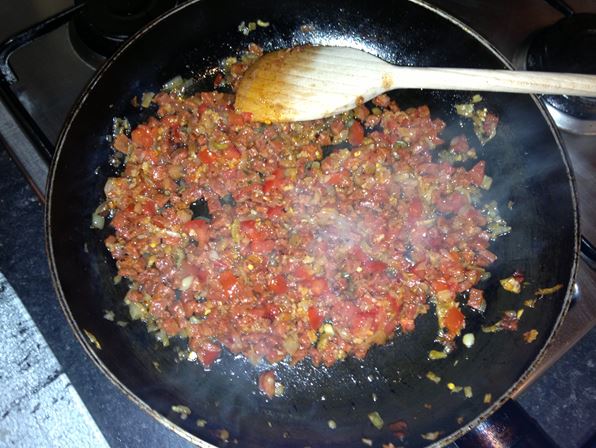We had a family gathering last weekend with all four of my siblings being together with my dad for a day (which is quite a feat when my older sister lives in Spain and my younger sister lives in Yemen!). We decided that an informal spread was the way forward as there were eight of us eating in total so an array of dishes of dishes were prepared including three types of bruschetta, a bacon, leek and cheddar cheese quiche, chicken goujons and a rhubarb and custard cheesecake. My contribution (as well as the cheesecake!) was a Roast Peach, Parma Ham and Mozzarella Salad which proved very popular and was certainly a delicious addition! I used Jamie Oliver's recipe as a base but my niece and I invented our own dressing which despite being rather unusual, (we think!) it worked rather well!
6 peaches
Extra virgin olive oil
2 x 125g balls of buffalo mozzarella
12 slices of Parma ham
1 lemon or lime
Sea salt and freshly ground black pepper
100g rocket
A few sprigs of fresh mint, leaves picked
2 tablespoons Caster sugar
Method
Halve and de-stone the peaches, then lie them, cut-side up, in a snug fitting roasting tray. Drizzle them with oil, slide into a hot oven and roast for 20-30 minutes. You want them to be charred and sticky. Keep an eye on them and rotate the tray for even cooking.
Chop the mozzarella into slices or chunks, whatever you'd prefer! Mix the rocket and mint leaves together and next make the dressing. Jamie's recipe suggests you squeeze the lemon juice into a jam jar (we use a lime) and top up with three times as much oil, the season well with salt and pepper. Now this was absolutely fine but my niece and I decided we'd prefer something a little sweeter so we had a little experiment with caramel to make it more to our taste.
We heated the caster sugar in a dry frying pan over a high heat to dissolve the sugar. It's advised not to stir the sugar, just tilt the pan carefully to move it around. Once the caramel had formed, we poured this straight into the lemon/oil mixture where it immediately set into a solid lump of caramel. We transferred the mixture to a food processor and blended until the lump was broken down into much smaller pieces.
Remove the peaches from the oven and allow to cool. I cut the peaches in halve again at this point. Drain the excess juice from the peaches and the pan into the dressing. The end result (as strange as it sounds) was a deliciously sweet dressing with the tiny nuggets of caramel adding a lovely subtle crunch to the salad.
Mix some of the dressing with the rocket and mint leaves and put a third of the leaves on a serving plate. We decided to build the salad in three layers, adding a few peach quarters, slices of mozzarella and torn pieces of Parma ham to each layer . Continue to dress the salad as you build it, ensuring that each layer has all the components and is well dressed.
It's best to serve this salad straight way so the peaches are still warm.
Please note all photographs used in this blog entry are actual pictures of my cooking, not file photos.



































